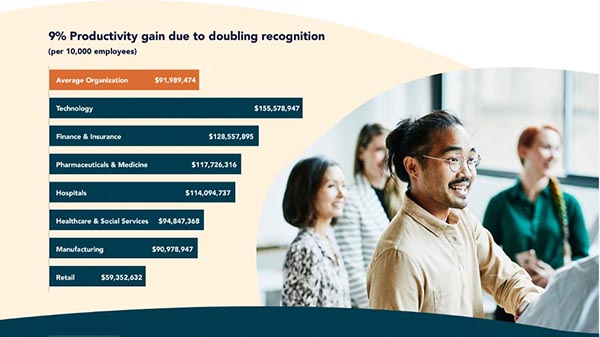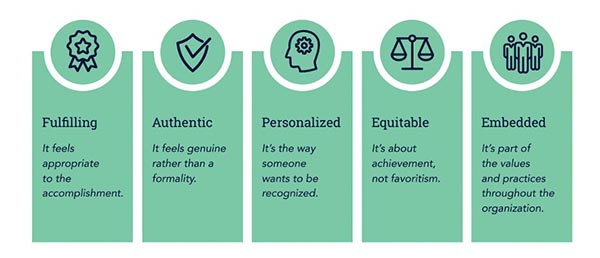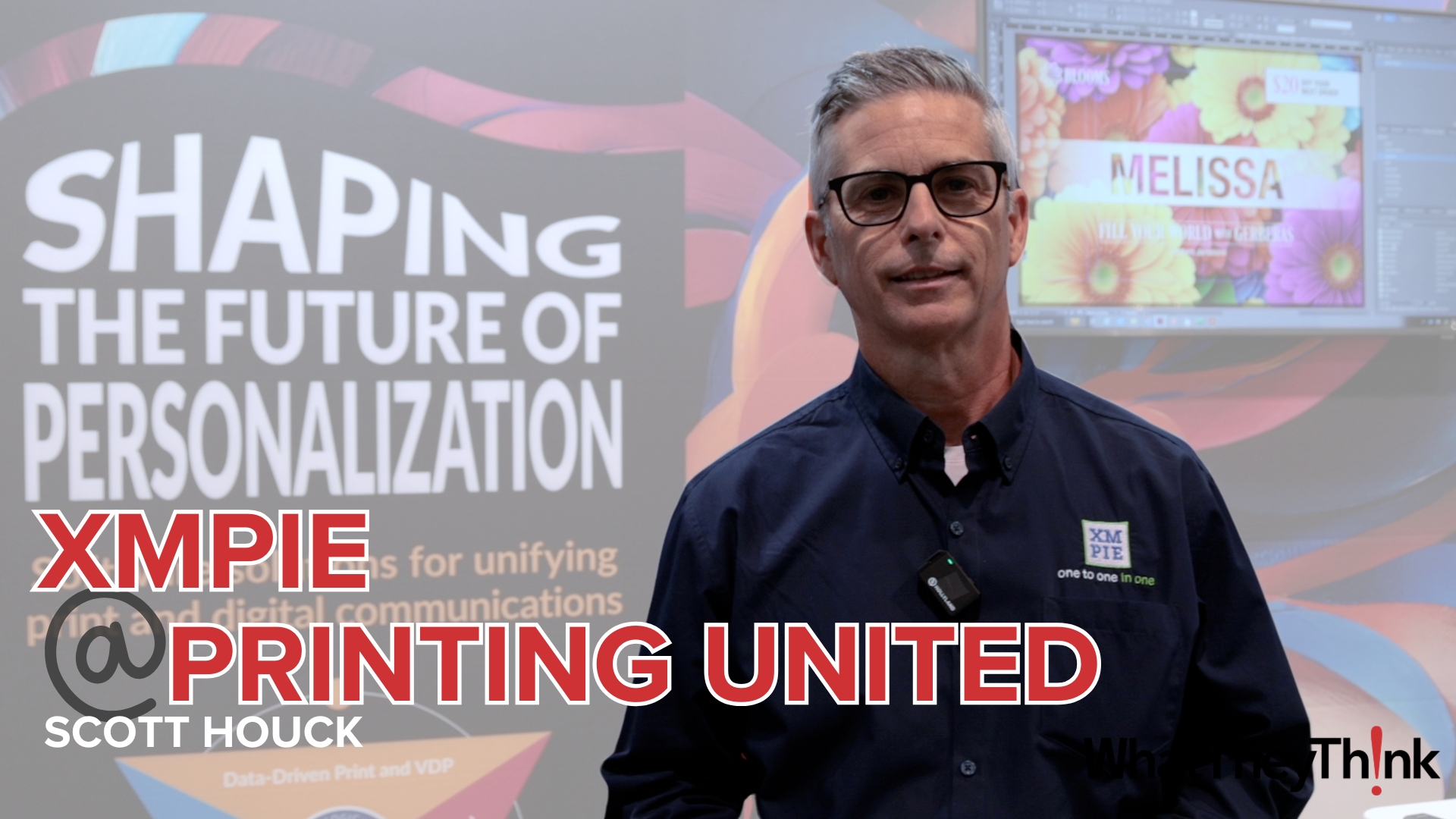When was the last time you sat down with your employees and told them they are doing a great job? Not only during their annual review or after they’ve done something spectacular, but “just because”?
According to a new study from Gallup and Workhuman (“From Praise to Profits: The Business Case for Recognition at Work”) the motivating power of employee recognition remains untapped in the majority of organizations. This isn’t just a Workhuman finding. There is a growing volume of research confirming this connection, as well.
Note the authors of the report: “Amid the turmoil of recent years, it can be easy to forget that every organization is ultimately made up of people. And what those people feel—about their leaders, their team members, themselves and their lives—provides the fuel for high performance.”
Workhuman notes that, when done right, employee recognition not only engages employees and boosts morale, but it can improve an organization’s financial success.
Employees Show Up and Do More…Safely
The report reviewed correlations between employee recognition and employee outcomes across hundreds of organizations and thousands of teams in different industries. It breaks down three ways recognition improves business performance: through increased productivity, safer workplaces, and decreased absenteeism.

Globally, one in four employees in Gallup’s database strongly agrees that they have received recognition or praise for doing good work in the last week. Researchers found that if the median business in the Gallup database doubled the number of employees who feel this way, it could see the following:
- 9% increase in productivity
- 22% decrease in absenteeism
- 22% decrease in safety incidents
The report was aimed at very large international organizations (more than 10,000 employees), so the dollars savings reported from improvements in these areas were probably larger than the GDPs of some small countries. But the principle remains the relevant to businesses of all sizes.
Benefits from improving employee morale vary by industry. The industries most impacted by morale improvements, in order of impact, were as follows:
- Technology
- Finance and insurance
- Pharmaceuticals and medicine
- Hospitals
- Healthcare and social services
- Manufacturing
Work Does Recognition Work So Well?
Why does recognition work so well? Because (believe it or not) people are motivated by more than money and benefits. Internal factors such as liking the work they do, liking the people they work with, and finding meaning and purpose in their work matter more than many companies realize.
“Recognition supports all three of those criteria: It celebrates individual work, it bonds teams together and it connects personal achievement to organizational success. When employees feel engaged in this way, they show up each day ready to give their best. They also work harder, are more productive and are less prone to burnout.”
Think this is just words? Think about your employees as being like a sports team. When asked, “How do you find the motivation to come back from two sets down / 28 to nothing and win?” how many times have you heard a member of your favorite football, basketball, or volleyball team say, “I did it for my teammates. I love those guys, man. I did it for them.”
Strong teams (any kind of team) simply perform better, and how much a team cares about and looks out for each other, the stronger the team is and the better it performs.
Quality Is UP, As Well
Even the quality of the team’s work goes up. Gallup / Workhuman find that when recognition has become an important part of workplace culture, employees are nearly twice as likely to rate their team’s performance as “excellent.”
Interestingly, increases in productivity due to employee morale have a direct correlation to a reduction in safety incidents, as well. This is particularly important to manufacturing industries like printing: “Every year, work injuries cost U.S. businesses $163.9 billion dollars. In 2020, 99 million days of work were lost due to work-related injuries. Not only do these events affect budgets and productivity, they also impact individuals and their families in ways that never end up on a spreadsheet.”
True ’dat.
How does it work? Let’s go back to the sports team analogy. Especially when the recognition comes from other employees, then employees tend to look out for one another. They pay more attention to detail, are less likely to cut corners, and genuine care about the people around them. “They do things the right way, not because the rules say so, but because they don’t want to see the people they care about get hurt,” notes the report.
They Show Up for Work
Absenteeism goes down substantially, as well—22% if you can double the percentage of employees who feel they have been recognized within the past two weeks. The “why” comes down to the simple question: “What gets you out of bed in the morning?” If you can’t stand where you work, don’t feel recognized or valued, the incentive to hit the snooze button gets stronger…even if you are making a high rate of pay.
“Pay only motivates people so much,” notes the report.
Then there is the impact of mental health. The study notes that 40% of employees say their job has had a “somewhat negative” or “extremely negative” impact on their mental health in the last six months. Recognition can play a role in improving their sense of wellness.

Now Let’s Get Started
If you like what you hear, then it’s time to set up an employee recognition program. However, it can’t be a checkbox in which you go through the motions. A successful employee recognition program has to become part of the fabric of the company. It has to be simply what you do.
The report rounded out with the following advice to owner and managers in their “next steps to get started”:
- Make appreciation part of your company culture. Culture transformation takes a unified commitment from your leadership team over the long haul.
- Review your current recognition traditions and modernize them. “Have rewards become a formality? Is your recognition fair and equitable to everyone, regardless of their role in the company?
- Model recognition that others can see. “Culture begins at the top…Be the kind of employee you want to see more of.”
- Personalize recognition rather than making it one-size-fits-all. It starts with the question, “How do you like to be recognized?”
- Appreciate employees for who they are, not just what they do. By recognizing personal accomplishments and milestones outside of work, you (and your managers) can show that you care about employees as people.
Now let’s all get busy and be good humans.
Download the entire report here.















Discussion
Only verified members can comment.